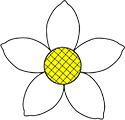Field training

Lessons in the form of half-day small group excursions consist of field demonstrations of various species. Several lecturers take turn in presenting vascular-plant flora, mosses, algae, fungi and lichens. Combination of different lecturers and altering the organism groups in focus make the lessons varied. The emphasis is placed on recognizing and naming the most common representatives of particular groups rather than on a complete knowledge of the local flora. Information regarding ecological requirements and biology of the presented species is also supplied. Before the course, we recommend attending some basic lectures on plant (fungal, algal) systematics, reproductive biology and morphology, though it is not a prerequisite for participation.
Small exhibitions of natural objects found in the vicinity of the camp are carefully prepared during the course. These include representatives of several groups – mosses, liverworts, lichens, fungi and “grasses” (plant families Poaceae, Cyperaceae and Juncaceae). The aims are both to help students with learning the most common species and, for more advanced students, to broaden their knowledge of less common species or species from taxonomically challenging groups. It is not necessary to learn all the exhibited specimens to pass the course successfully.

A whole-day trip further to the surrounding area is traditionally organised on Thursday. Lecturers are in charge of selecting the route and its destinations. The trips are planned to visit habitats which are uncommon in the vicinity of the camp (e.g. peat bogs, old sand pits) or other places of general interest (castle ruins, restaurants, etc.). Students can join a lecturer of their choice (up to the full capacity of the particular trip route).
The knowledge of the most common representatives of the demonstrated groups of organisms is tested on Friday afternoon. A satisfactory performance of students during this examination is necessary for passing the course and getting credits.


